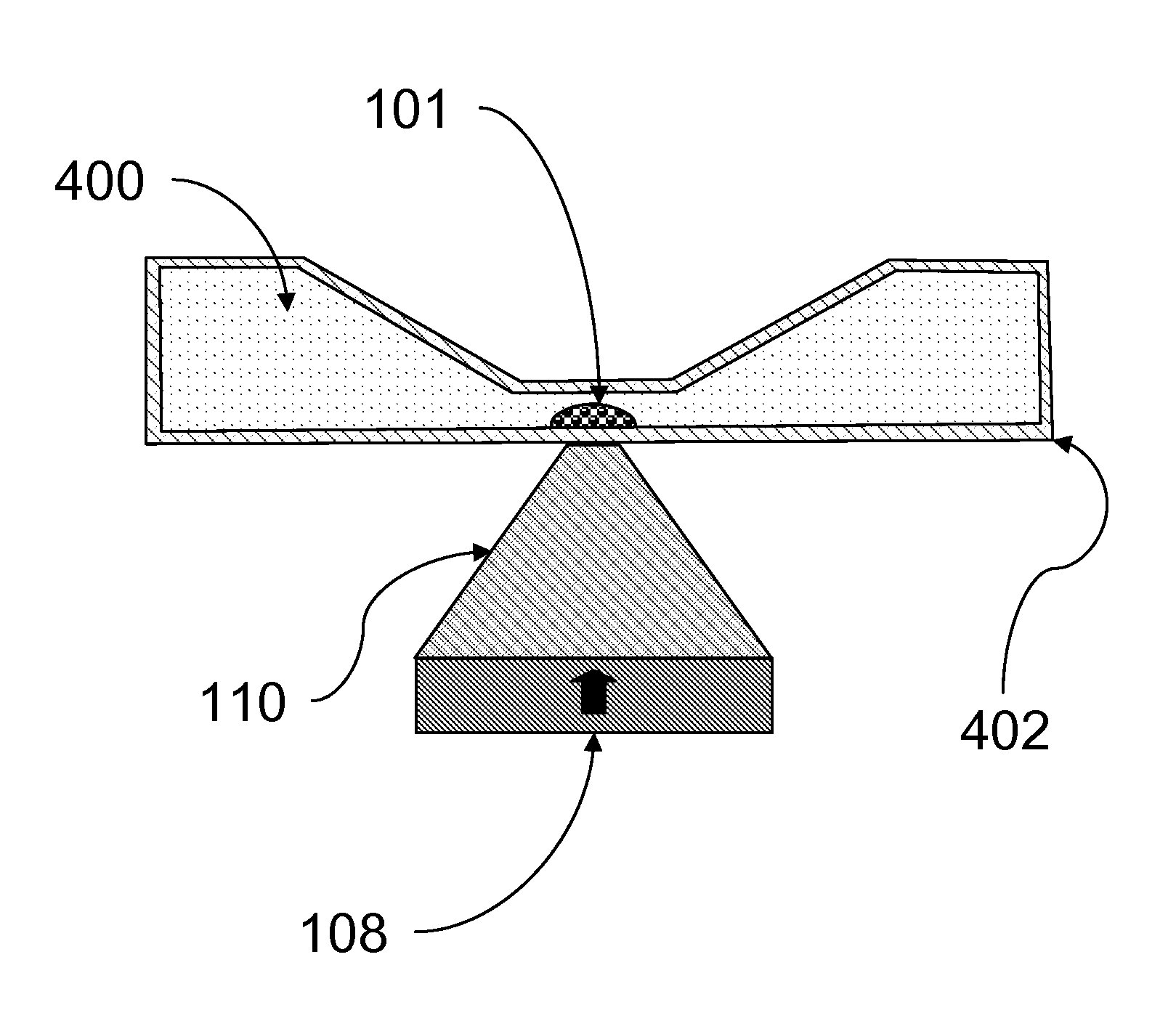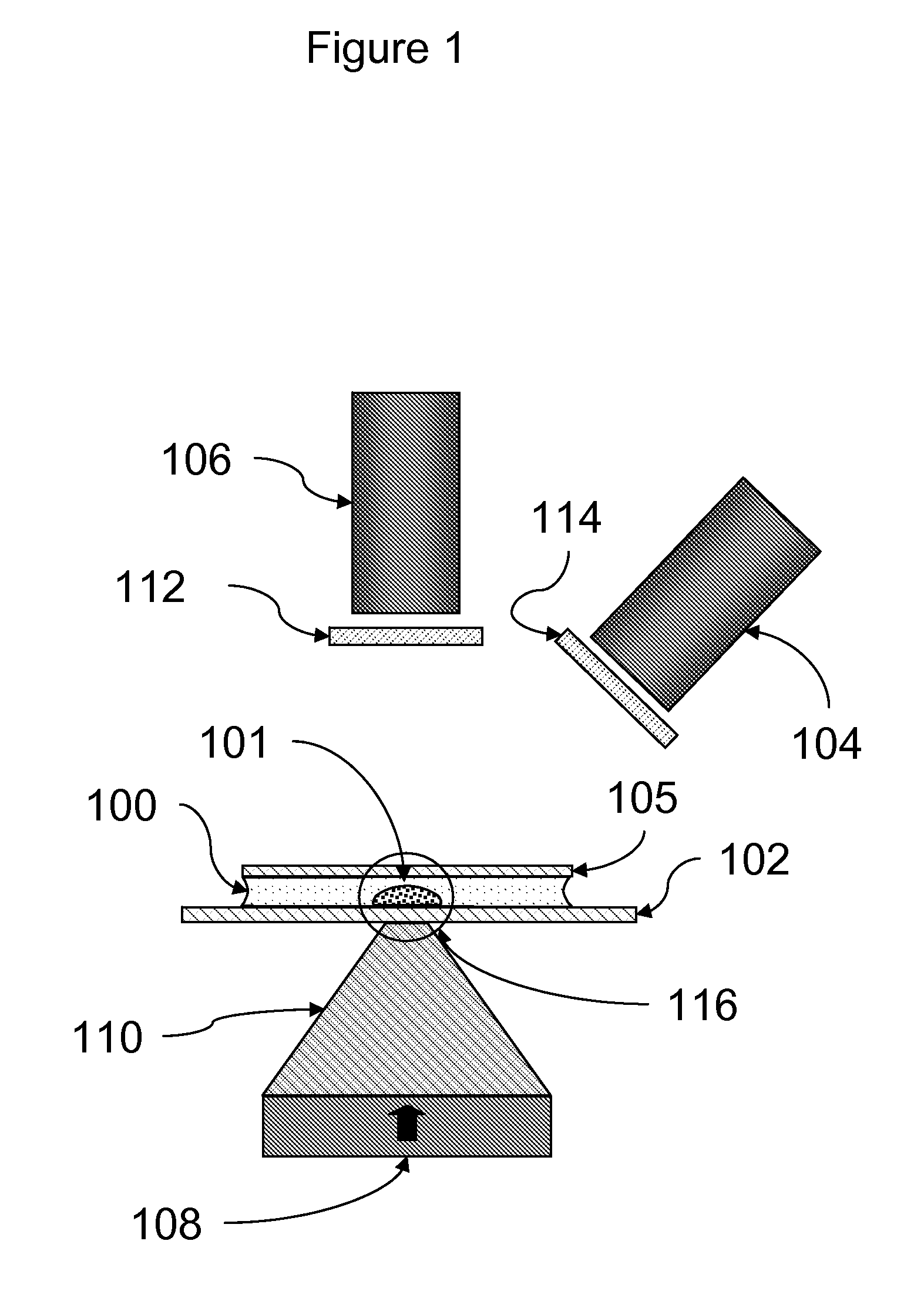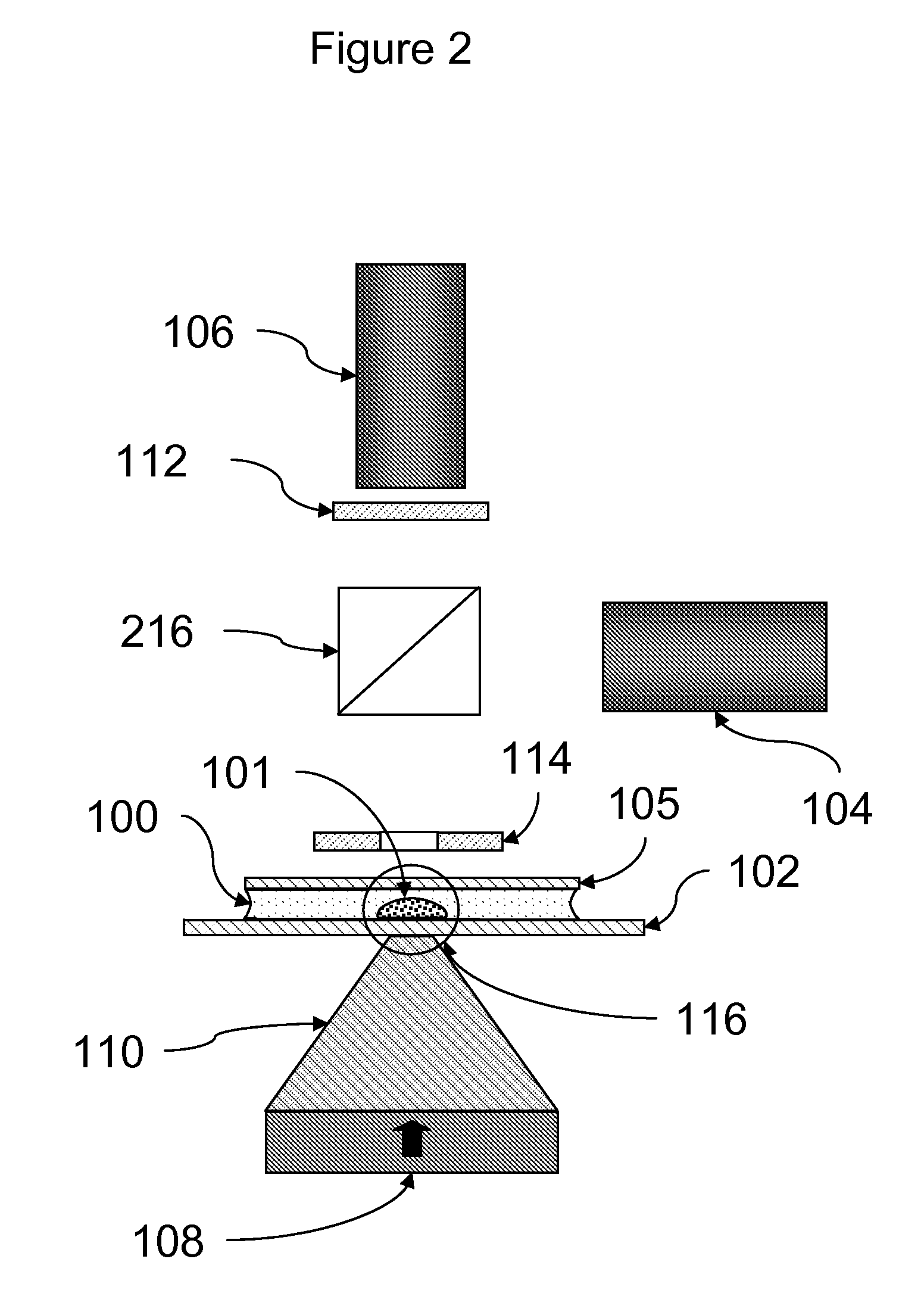Rapid particle detection assay
a particle detection and particle technology, applied in the field of optical detection methods, immunology, cellular biology, can solve the problems of adding to the complexity and cost of instruments, and achieve the effect of simplicity and cos
- Summary
- Abstract
- Description
- Claims
- Application Information
AI Technical Summary
Benefits of technology
Problems solved by technology
Method used
Image
Examples
example 1
CD4+ T Cell Concentration Assay: Antibody Labeling
Instrument
[0087]Assays were carried out using an instrument essentially as shown in FIG. 11.
[0088]A rectangular sample holder 1102 containing a sample chamber essentially as shown in FIG. 4 was used. The diameter of the sample chamber was about 7 mm, and the total volume of the sample chamber was about 20 μl. The detection region was a region about 2 mm in diameter in the center of the sample chamber. The upper surface of the sample chamber was recessed about 700 μm below the upper surface over the perimeter of the sample chamber such that the depth of the sample chamber in the detection region was about 50 μm. The sample holder was carried in a sample holder carrier 1105, which facilitated inserting the sample chamber into the instrument and shielded the sample chamber from ambient light. Once inserted, the sample chamber was position directly over the focusing magnet 1109.
[0089]The focusing magnet consisted of a cylindrical (disc) ...
example 2
CD4+ T Cell Concentration Assay: DNA-Dye Labeling
[0106]This example describes the use of a nucleic acid stain to fluorescently label all cells in the sample. The instrument and assay methods were essentially as described in example 1, with the exception of the changes described, below.
Reagents
[0107]Commercially available CD4 antibody-coated magnetic particles (BD Imag™ beads, BD Biosciences, San Jose, Calif.) were used as magnetic capture reagents, as described in example 1.
[0108]A permeant DNA-binding dye, DRAQ5 (Biostatus Ltd., Leicestershire, England) was used as a detection reagent. Use of this dye results in the labeling of all nucleated cells in the blood sample.
[0109]Sample of whole blood were pretreated to selectively remove monocytes. Removal of monocytes was carried by magnetic depletion using CD14 antibody-coated magnetic particles (BD Imag™ beads, BD Biosciences, San Jose, Calif.) following the manufacturer's instructions.
[0110]For each assay, 100 μL of whole blood ...
PUM
| Property | Measurement | Unit |
|---|---|---|
| depth | aaaaa | aaaaa |
| volume | aaaaa | aaaaa |
| vertical depth | aaaaa | aaaaa |
Abstract
Description
Claims
Application Information
 Login to View More
Login to View More - R&D
- Intellectual Property
- Life Sciences
- Materials
- Tech Scout
- Unparalleled Data Quality
- Higher Quality Content
- 60% Fewer Hallucinations
Browse by: Latest US Patents, China's latest patents, Technical Efficacy Thesaurus, Application Domain, Technology Topic, Popular Technical Reports.
© 2025 PatSnap. All rights reserved.Legal|Privacy policy|Modern Slavery Act Transparency Statement|Sitemap|About US| Contact US: help@patsnap.com



